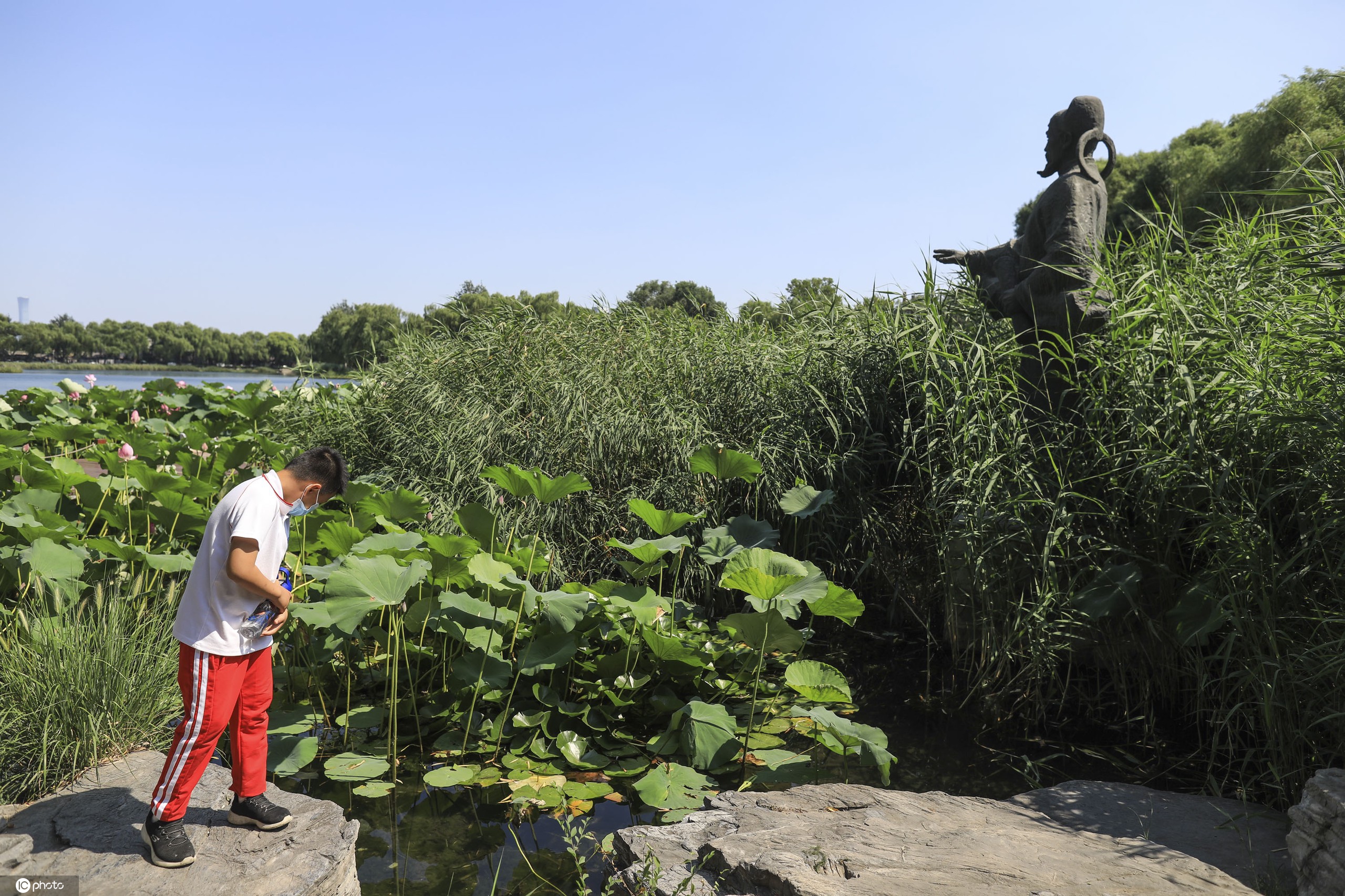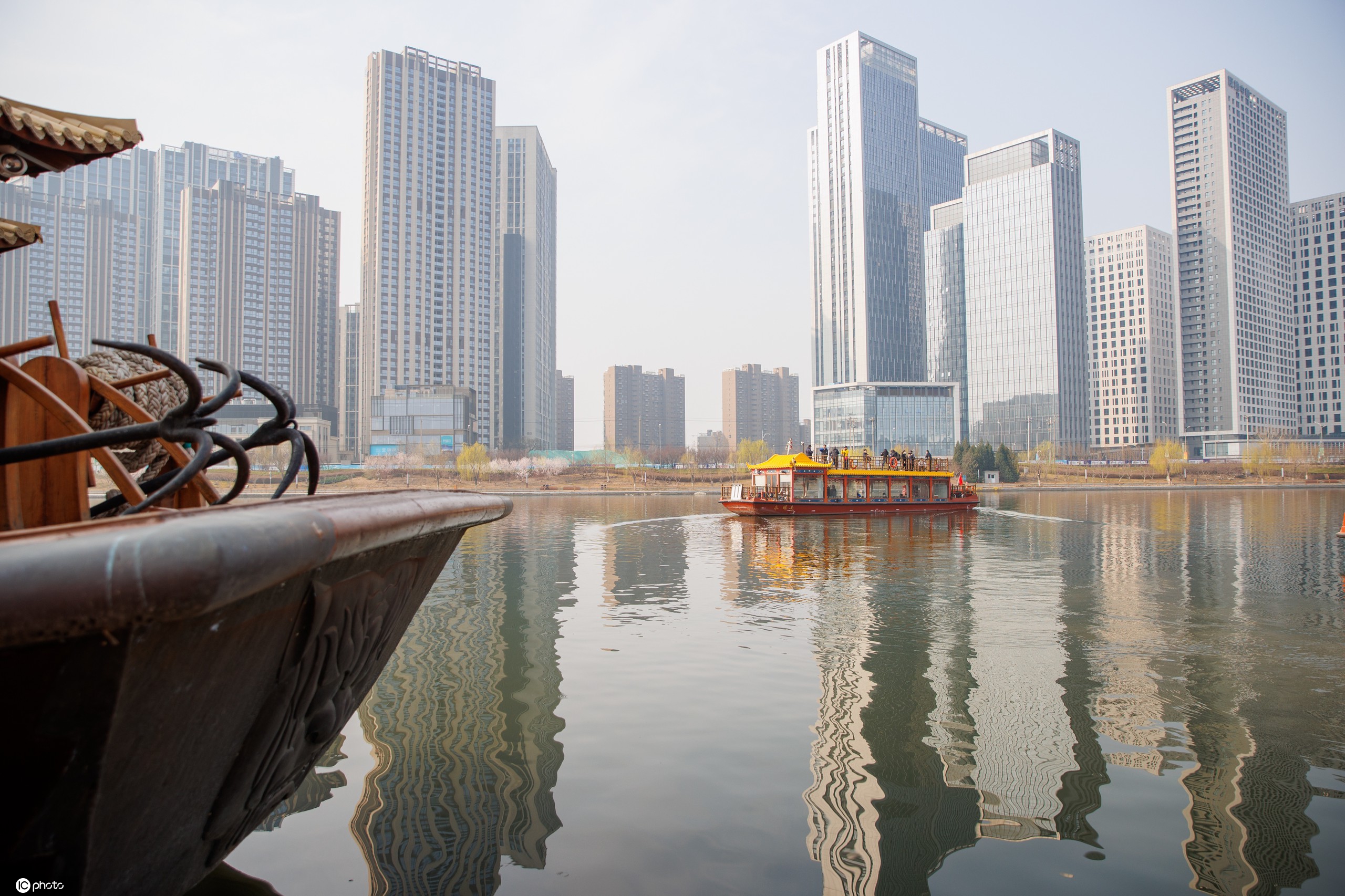Cultural diversity flourishes along ancient Grand Canal
- By Yan Bin
 0 Comment(s)
0 Comment(s) Print
Print E-mail China.org.cn, April 5, 2023
E-mail China.org.cn, April 5, 2023
Stretching from Beijing to Hangzhou, the 2,700-km long Grand Canal boasts a rich 2,500-year history as the sole transportation artery connecting northern and southern China. It is the world's longest canal and was included on the UNESCO List of Intangible Cultural Heritage in 2014.
In 2019, the central government issued an outline calling for coordinated economic and social development along the Grand Canal to achieve high-quality development, leading to the formation of the Grand Canal Belt. Various cultural heritage sites on both sides of the riverbank punctuate the 82-kilometer Beijing section of the canal.
The uniqueness of the Grand Canal Cultural Belt lies in its cultural diversity. The flowing canal has fostered economic, trade, and exchanges between the north and the south, as well as between China and other countries. Over time, these exchanges have culminated in a diverse Beijing-style canal culture.

Photo taken on February, 7, 2023, shows the external façade of the Beijing Grand Canal Museum. [IC photo]
The Beijing Grand Canal Museum, or the east building of the Capital Museum, is currently under construction. "The east hall's decoration and electrical installation are underway," said Feng Hao, head of the collection department of the Capital Museum. He also said the museum continues to collect cultural relics related to the Grand Canal and will showcase donated stone sculptures of water animals and Ming Dynasty rubbings. The museum is expected to be completed by the end of this year and open to the public by the end of next year.

A boy passes the statue of Guo Shoujing, July 20, 2022. [IC photo]
In October 2018, Shichahai Xihai Wetland Park opened to the public, becoming the only urban wetland in the core area of the capital. At the end of the same year, the Guo Shoujing Memorial Hall on the park's north side reopened after a nearly two-year closure. In the first year of its reopening, the hall attracted over 100,000 visitors, making it a popular attraction among Beijing's smaller museums.
Following the Beijing section of the Grand Canal, more than 50 heritage sites such as sluice gates, bridges, and ancient ruins have gradually become "cultural pearls" as they undergo meticulous research and restoration.
Wanshou Temple, the best-preserved imperial temple from the Ming and Qing dynasties in the Beijing section of the Grand Canal, has been fully restored. The Beijing Art Museum opened within the temple last September and has been aptly dubbed the "Little Forbidden City in West Beijing." Visitors can admire the exquisite calligraphy, paintings, and porcelain displayed inside. Ms. Wang, a local resident, praised the reopened Wanshou Temple, saying, "It's quite an experience to participate in DIY traditional Kesi and tie-dye workshops."
Moving away from Wanshou Temple, the Tonghui River is a landmark for historical and cultural tourism along the Beijing section of the Grand Canal. In developing Beijing's sub-center Tongzhou district, the Grand Canal cultural tourism initiative plays a crucial role in the district's construction and development. The Beijing Grand Canal Cultural Tourism Scenic Spot in Tongzhou district aims to become the first 5A-level scenic spot in the capital's eastern region, attracting more citizens and tourists.

The three temples and one pagoda complex at the Beijing Grand Canal Cultural Tourism Scenic Spot are full of spring, March 19, 2023. [IC photo]
The three temples and one pagoda complex in the north of the scenic spot completed the restoration of cultural relics and upgrading of tourist facilities in September last year and opened to the public. The Randeng Pagoda, with more than 1,400 years of history, has been recently repaired. The renovation not only changed the pagoda's appearance but also added state-of-the-art lighting equipment, enhancing the visitor experience and interactivity. During the Lantern Festival this year, the Randeng Pagoda hosted a three-day light show.
The three temples – Confucian Temple, Youshengjiao Temple and Ziqing Palace – represent Confucianism, Buddhism and Taoism, respectively. The close proximity of temples representing three different religions is a rare sight throughout the entire country. The Grand Canal has fostered a dynamic flow of culture, giving rise to an open and inclusive atmosphere. During this year's Spring Festival, the Randeng Pagoda Market opened its doors, drawing numerous tourists and offering canal-themed cultural and creative products, intangible cultural heritage exhibits, and specialty snacks.

The Grand Canal cruise ship in Tongzhou district, Beijing, starts its first voyage this spring, March 19, 2023. [IC photo]
The Beijing Municipal Bureau of Culture and Tourism has developed over 10 canal-themed tourist routes in seven districts along the Grand Canal. By coordinating cultural tourism resources through the Grand Canal Cultural Belt in each district, the bureau aims to invigorate cultural tourism consumption.
On April 28, 2022, the entire length of the Beijing-Hangzhou Grand Canal opened for navigation for the first time in a century.
As cities situated on opposite ends of the Beijing-Hangzhou Grand Canal, Beijing and Hangzhou are connected by this historic waterway. Since 2019, the two cities have established the Beijing-Hangzhou Dialogue Mechanism for China's Grand Canal Cultural Belt. This collaborative effort brings together resources from the government, industry, academia and research institutions, promoting cultural integration and cultural tourism promotion to realize the "Canal Revival" vision.
From canal heritage parks and wetland parks to ancient buildings, villages, towns, museums, libraries, and art galleries, the Grand Canal Cultural Belt encompasses both cultural heritage sites scattered along the canal and newly built cultural facilities in urban areas. This blend of old and new fosters the ongoing development of the Grand Canal Cultural Belt, infusing the surrounding areas with more vitality.






Go to Forum >>0 Comment(s)